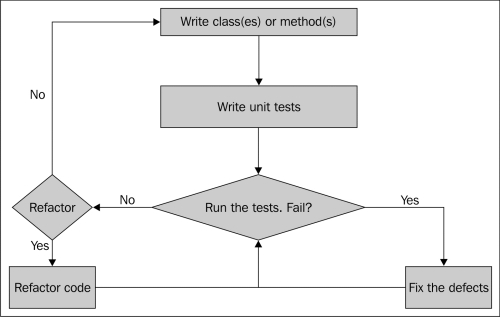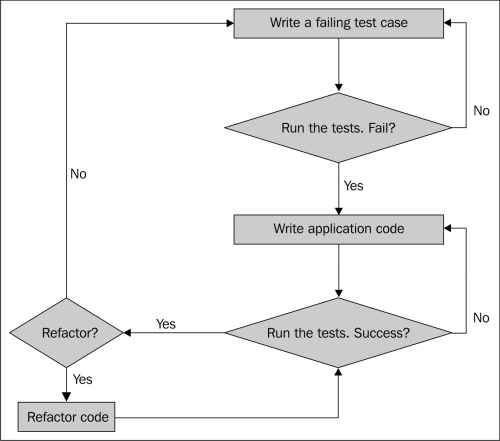There are two known approaches in writing unit tests for applications. The first approach prefers writing unit tests after writing the actual application code and this approach is called traditional unit testing . The second approach prefers writing unit tests before writing the actual application code, and this approach is called Test-Driven Development (TDD) or the Test-First approach.
As shown in the following figure, traditional unit testing is about writing the application code first. It can simply be a class or a method. After writing the piece of code, the unit tests, which test the functionality of the code, are written. Then the unit tests run. If the unit tests fail then the developer fixes the defects and runs the unit tests again. If the unit tests succeed then the developer can either refactor the code and run the tests again or continue to write the next piece of code and so on.

As shown in the following figure, TDD starts by writing a failing unit test to indicate that the functionality is missing. After writing the unit test, the unit test must be run to ensure that it fails. After that, the developer writes the application code that meets the unit test expectation. The unit test must be run again to ensure that it succeeds. If it fails then the developer fixes the bugs and if it succeeds the developer can either refactor the application code or continue writing the next test case.

TDD is a powerful technique, as it can give you more control on the application code and design; however, it is a double-edged sword because if it is done incorrectly, writing the tests can waste a lot of time and the schedule of the project can slip. Finally, either you are using TDD or traditional unit testing technique. Don't forget to make your tests automated, repeatable, easy to understand, incremental, easy to run, and fast.



